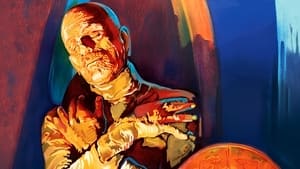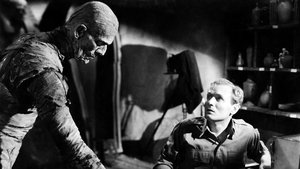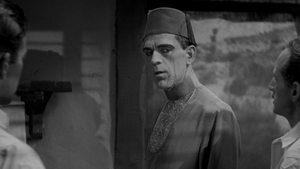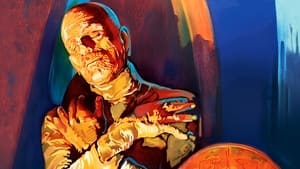Contact: info@alwanfilm.com
Video Sources 0 Views
Synopsis
Review: The Mummy 1932 Colorized – Unveiling the Legacy of Early Horror Cinema
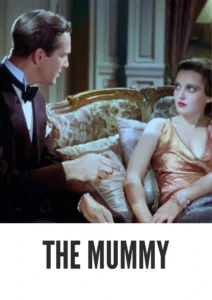
Introduction
In the annals of classic horror cinema, few films evoke as much intrigue and nostalgia as “The Mummy 1932.” Directed by Karl Freund, this seminal piece of early horror cinema remains a touchstone for the genre, captivating audiences with its blend of ancient myth and eerie suspense. In this article, we will delve into the significance of “The Mummy 1932,” exploring its impact on the horror genre and its enduring legacy in film history. We’ll also examine the influence of its early special effects and how it compares to modern interpretations of horror.
Check The Full Colorized Movies List
Check Our Colorized Movies Trailer Channel
Understanding The Mummy 1932 Colorized: Director, Cast, and Genre
“The Mummy 1932” was directed by Karl Freund, a key figure in the development of cinematic horror. Freund, known for his work on “Metropolis” (1927) and “Dracula” (1931), brought a unique visual style and atmosphere to this film, blending gothic horror with elements of ancient mysticism. His direction is marked by a meticulous attention to detail and a keen sense of suspense, which are evident throughout the film.
The cast of “The Mummy 1932” features Boris Karloff in one of his most iconic roles as Imhotep, the reanimated Egyptian priest. Karloff’s portrayal is both chilling and poignant, bringing a tragic depth to the character that elevates the film from a mere horror spectacle to a meditation on love, loss, and immortality. The film also stars Zita Johann as Helen Grosvenor, the reincarnation of Imhotep’s lost love, and David Manners as Frank Whemple, the archeologist who becomes entangled in the unfolding horror.
“The Mummy 1932” falls within the horror genre but also incorporates elements of romance and drama. The film’s blending of genres helps to create a rich, atmospheric experience that continues to captivate audiences.
Exploring the World of The Mummy 1932 Colorized: Plot and Characters
The plot of “The Mummy 1932” revolves around the reawakening of Imhotep, an ancient Egyptian priest who was buried alive for attempting to bring his lost love back to life through forbidden rituals. The film opens with the discovery of Imhotep’s tomb and the accidental unearthing of his mummified body. When a team of archaeologists, led by Frank Whemple and his father, stumble upon the tomb, they inadvertently trigger a series of supernatural events.
Imhotep, played masterfully by Boris Karloff, is resurrected and begins a quest to find his reincarnated lover, Helen Grosvenor, who is revealed to be a modern-day woman with a mysterious connection to the ancient priest. As Imhotep pursues Helen, the film explores themes of immortality, obsession, and the eternal quest for redemption.
The supporting characters, including Dr. Muller (Edward Van Sloan) and Dr. Joseph Whemple (Arthur Byron), contribute to the film’s rich narrative tapestry. Their interactions with the central characters help to build tension and deepen the story’s exploration of the supernatural.
The Art of Early Special Effects
The early special effects in “The Mummy 1932” were groundbreaking for their time, contributing significantly to the film’s eerie atmosphere. The film employed a variety of techniques to create the illusion of the supernatural and the ancient world, including elaborate sets, atmospheric lighting, and innovative makeup effects.
One of the most striking elements is Boris Karloff’s makeup as Imhotep. The intricate design of his mummy’s appearance, with its layers of bandages and decayed features, helped to establish the visual language of the mummy archetype in horror cinema. Karloff’s performance, combined with the makeup effects, creates a hauntingly memorable image that has influenced countless portrayals of mummies in film and television.
Early Horror Cinema: A Brief History
The 1930s marked a golden age for horror cinema, with several landmark films setting the stage for the genre’s development. “The Mummy 1932” emerged during this period of innovation, alongside other classics such as “Dracula” (1931) and “Frankenstein” (1931). These films were instrumental in shaping the conventions of horror cinema and establishing the genre’s enduring appeal.
Early horror films often relied on atmospheric settings, dramatic lighting, and exaggerated performances to create a sense of dread and suspense. “The Mummy 1932” exemplifies these techniques, using its Egyptian setting and ancient curses to evoke a sense of the unknown and the supernatural.
The Mummy 1932 and Its Impact on Horror Cinema
“The Mummy 1932” had a profound impact on the horror genre, influencing both its visual style and thematic content. The film’s portrayal of the mummy as a tragic figure rather than a mere monster introduced a new dimension to the genre, blending horror with elements of romance and drama.
The film also set a precedent for future mummy-related horror films, establishing many of the conventions that would become standard in the genre. From the cursed tombs to the reanimated corpses, “The Mummy 1932” helped to define the visual and narrative elements that would be revisited in later films.
The Debate Over Early Horror Film Conventions
The conventions established by early horror films, including “The Mummy 1932,” have been the subject of much debate and analysis. While some critics argue that these conventions have become clichéd over time, others view them as foundational elements that continue to shape the genre.
The debate over these conventions reflects broader discussions about the evolution of horror cinema and the balance between innovation and tradition. While modern horror films often seek to subvert or reinvent classic tropes, the influence of early films like “The Mummy 1932” remains evident in contemporary storytelling.
Examining The Mummy 1932’s Legacy
The legacy of “The Mummy 1932” extends far beyond its initial release, influencing a wide range of subsequent films and media. The film’s portrayal of ancient curses, supernatural reanimation, and tragic love has been echoed in countless adaptations and reinterpretations.
In particular, the character of Imhotep has become an iconic figure in horror cinema, appearing in various sequels, remakes, and spin-offs. The film’s influence can be seen in the many mummy-themed films that followed, including the popular “Mummy” series of the late 1990s and early 2000s, which reimagined the classic horror story for a new generation of viewers.
Director’s Cinematic Legacy: Beyond The Mummy 1932 Colorized
Karl Freund’s contribution to cinema extends beyond “The Mummy 1932.” Freund was a highly influential figure in the development of film techniques and genres, known for his work as a cinematographer and director. His contributions to films like “Metropolis” and “Dracula” helped to shape the visual language of early cinema.
Freund’s use of atmospheric lighting, innovative camera angles, and meticulous set design established him as a pioneer in the horror genre. His work on “The Mummy 1932” further solidified his reputation as a master of suspense and visual storytelling.
Themes Explored in The Mummy 1932 Colorized
“The Mummy 1932” explores several themes that are central to its narrative. Among these are the concepts of immortality, obsession, and the quest for redemption. Imhotep’s resurrection is driven by his desire to reunite with his lost love, reflecting a tragic and obsessive longing that transcends time and death.
The film also delves into themes of forbidden knowledge and the consequences of defying ancient taboos. The discovery of Imhotep’s tomb and the subsequent events underscore the dangers of meddling with forces beyond human understanding.
Reception and Controversy Surrounding The Mummy 1932 Colorized
The initial reception of “The Mummy 1932” was generally positive, with critics praising its atmospheric storytelling and Karloff’s performance. The film’s success helped to solidify its place in the pantheon of classic horror cinema.
However, as with many classic films, “The Mummy 1932” has faced criticism and controversy over the years. Some critics have questioned the film’s pacing and narrative structure, while others have debated the effectiveness of its special effects. Despite these criticisms, the film’s impact and legacy remain undiminished.
Where to Watch The Mummy 1932 Colorized Online
For those interested in experiencing “The Mummy 1932,” the film is available on various streaming platforms and through classic film collections. Whether you are a seasoned horror enthusiast or a newcomer to classic cinema, the film offers a captivating glimpse into the early days of the genre.
FAQs About The Mummy 1932 Colorized
Q: Who directed “The Mummy 1932”?
A: “The Mummy 1932” was directed by Karl Freund, a renowned filmmaker and cinematographer known for his work on other classic horror films.
Q: What is the significance of Boris Karloff’s performance in the film?
A: Boris Karloff’s portrayal of Imhotep is considered one of his most iconic roles, bringing a depth and tragedy to the character that elevates the film beyond traditional horror fare.
Q: How does “The Mummy 1932” compare to modern mummy-themed films?
A: “The Mummy 1932” set many of the conventions for the mummy genre, influencing subsequent films and adaptations. While modern interpretations may differ in style and approach, the film’s impact on the genre is still evident.
Conclusion
“The Mummy 1932” remains a cornerstone of early horror cinema, its legacy enduring through the decades. The film’s innovative use of special effects, atmospheric storytelling, and Karloff’s unforgettable performance have cemented its place in cinematic history. As we continue to explore the rich tapestry of horror cinema, “The Mummy 1932” stands as a testament to the genre’s enduring power and the timeless appeal of its classic tales. Whether viewed in its original form or through the lens of modern reinterpretations, the film’s influence continues to shape our understanding of horror and its place in the cinematic world.
